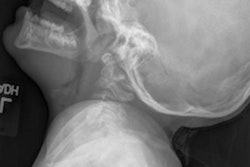
What do patients want from providers after they've had an imaging exam? They want their results as soon as possible -- and Web-based portals can help meet this demand, according to a study published online in the Journal of the American College of Radiology.
Web-based patient portals can allow patients to view finalized radiology reports and communicate directly with providers using portal messaging, researchers from the University of Michigan found.
Not only do these portals help patients track their own care and communicate with their doctors, they can also help a healthcare system or radiology practice identify gaps in service -- such as delayed access to reports -- that could be improved to provide a better, patient-centered experience, lead author Dr. Benjamin Mervak from the University of Michigan told AuntMinnie.com.
"The patient portal is a great source of unbiased data about what patients really want from their healthcare providers," he said.
Keyword analysis
To find out what patients were most interested in, Mervak and colleagues performed a search on all patient-initiated messages submitted via the University of Michigan's patient portal between October and December 2014. The portal is linked to the university's electronic medical record system.
 Dr. Benjamin Mervak from the University of Michigan.
Dr. Benjamin Mervak from the University of Michigan.The group theorized that if the number of patient searches on a type of scan actually exceeded scan volume at their facility, it was a sign of heightened patient interest in that modality.
Mervak and colleagues searched for keywords such as "x-ray," "xray," "ct," "mri," "scan," "image," and "radiology" and categorized the messages by content. They then analyzed the demographics of the patients who submitted messages (JACR, July 19, 2016).
About 99,000 imaging studies were performed during the study time frame: 55% of these were radiography exams, 14% were ultrasound, 19% were CT, and 11% were MRI. Of the more than 53,000 patient-initiated messages sent during the study period, Mervak's team included 1,597 queries that were related to imaging and that fit the study criteria.
Messages with more than one radiology-specific keyword were more likely to come from women (64%) than men (36%), according to the researchers. They also found that the most common inquiry (33%) was a request for imaging results; these messages were submitted a median of five days after imaging, with a range of two to nine days. Questions about radiation dose or risk made up only 0.1% of all inquiries.
In addition, there was a higher percentage of inquiries on advanced imaging modalities relative to actual scan volume, according to Mervak and colleagues. (The percentage of patient inquiries regarding ultrasound exams was the same as the scan volume, at 14%.)
| Patient portal inquiries vs. scan volume | |||||
| Modality | Percent of patient inquiries | Percent of scan volume | |||
| MRI | 38% | 11% | |||
| CT | 25% | 19% | |||
| Plain radiography | 23% | 55% | |||
As for demographic factors, the researchers found that the proportion of messages submitted by white patients (89%) was greater than their proportion in the outpatient population (75%). Conversely, the percentage of African-American or Asian patients who submitted messages was significantly lower than their proportion in the outpatient population: African-Americans wrote 3% of messages but represented 10% of patients, while Asians wrote 4% of messages but represented 8% of patients.
These findings suggest "that demographic factors may play a role in a patient's interactions with a healthcare system, presenting an interesting conundrum as healthcare systems attempt to empower patients using resources like the patient portal," the authors wrote.
Finally, because the most common message from patients was a request for imaging results, Mervak's group conducted a deeper analysis of turnaround time for radiology results. Overall median turnaround time for radiology reports was five hours, while the median time for the provider to review the report was 70 hours and the median time for the provider to release the information to the patient portal was 101 hours.
"In other words, although patients waited a median of five days before writing to their provider for results, the radiology report was already in a finalized state for the vast majority of this time," the authors wrote.
Radiology responds
The study findings suggest a number of ways to increase patient satisfaction in general and deliver radiology reports more quickly, according to Mervak's team:
- Referring physicians could pre-empt patient inquiries for imaging results by releasing the reports within three to five days.
- Technologists could manage patient expectations by instructing them to expect results no sooner than five days after the exam.
- Interpreting radiologists could provide patients with an email address or a phone number to use if they have questions about the report overall or about a specific finding.
- Facilities could establish a radiology consult clinic that would give patients the opportunity to meet with a radiologist to see their exam images and/or ask questions about the report.
Overall, radiologists need to keep in mind that patients' interest and engagement in their own healthcare continues to grow, Mervak told AuntMinnie.com.
"Our patients are very interested in their results," he said. "The fact is, we're not just communicating with referring doctors anymore."




















